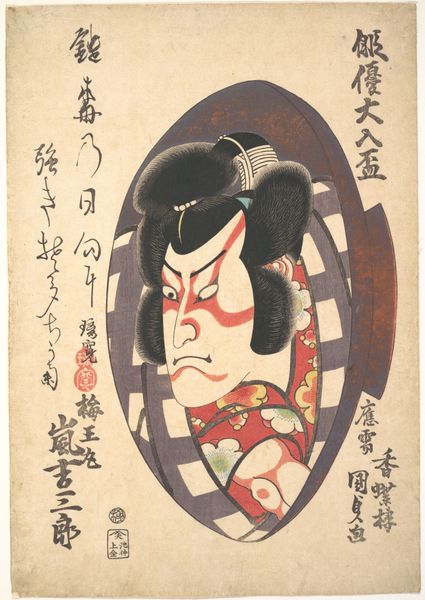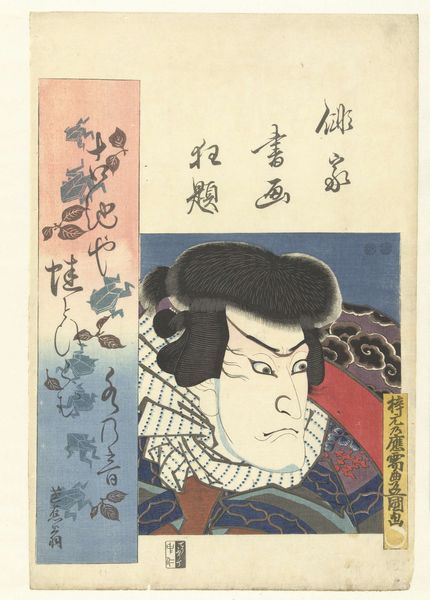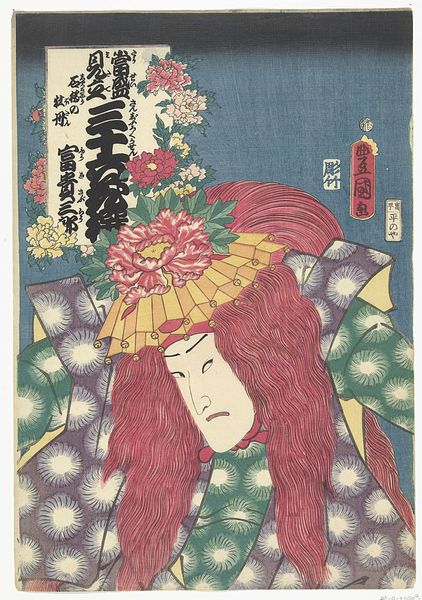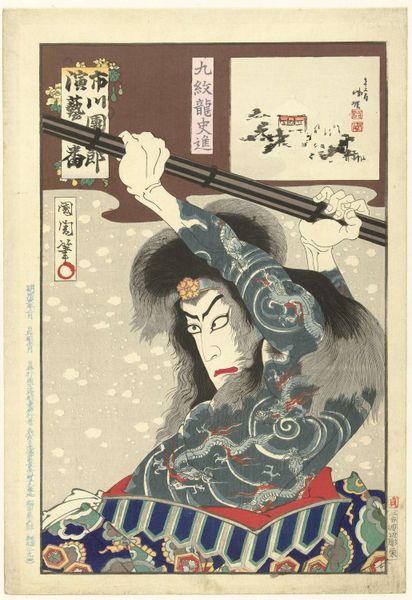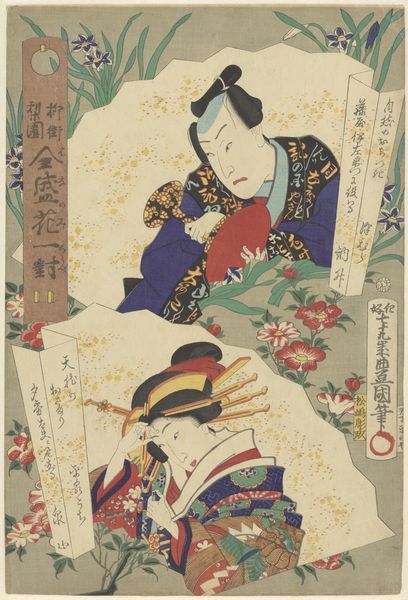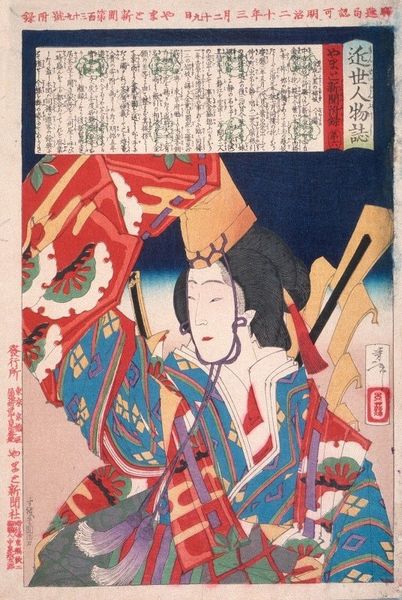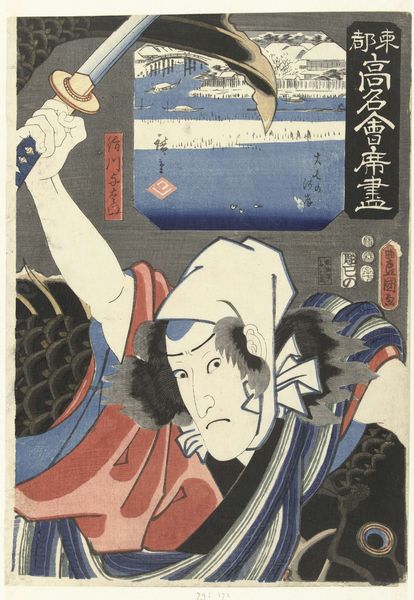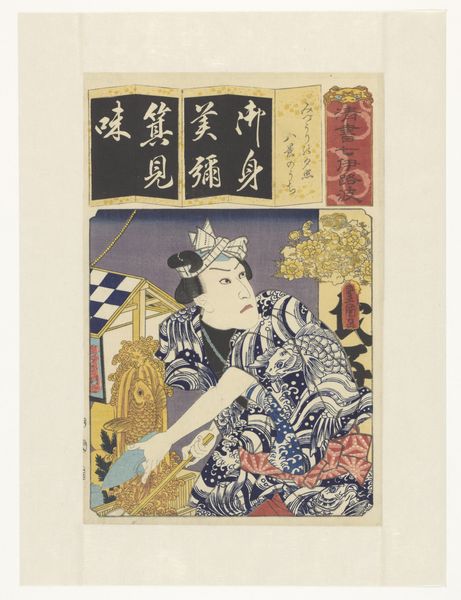
Dimensions: height 437 mm, width 278 mm
Copyright: Rijks Museum: Open Domain
Curator: Looking at this print by Torii Kiyotada, possibly from 1896, entitled "Ichikawa Danjuro IX als de geest van Kagekiyo" – that’s "Ichikawa Danjuro IX as the ghost of Kagekiyo" for us – I'm immediately struck by how much it reveals about the cultural significance of Kabuki theatre and the role of its actors in shaping popular imagination at the time. Editor: Whoa, it’s intense! All that bright color, the swirling patterns—it's almost too much, yet somehow totally mesmerizing. Like a psychedelic dream of a samurai. You can feel this actor's presence just leaping off the paper. Curator: Exactly! This work comes from a larger Ukiyo-e tradition and what you describe as that "intense" aesthetic really tells us something. Think about the specific societal conditions. Ukiyo-e prints often served as publicity for actors and performances, functioning almost like modern-day film posters but, of course, also embedded with complex signifiers and narrative references to historic literary figures. The visual vibrancy worked as advertising and propaganda. Editor: Ah, so it’s selling not just the play but the actor, Danjuro himself, as a larger-than-life figure! It is like some vintage Japanese celebrity hype. Those white painted fists… and the dramatic makeup—they make him into this almost inhuman, fearsome spirit. There's pain there, but power, too. Curator: Yes, and remember Kabuki wasn’t just simple entertainment but also had significant roots in cultural and political commentary and expression. Kagekiyo, as a character, likely symbolized resilience and unwavering spirit, attributes tied to broader social anxieties or ideals circulating in Japanese culture at the time. How might his costuming also symbolize something? Editor: Good point. With the gold, floral designs... they suggest he's both earthly and supernatural, tethered to a rich past and maybe floating in some ethereal realm. He's a spectacle, really, a feast for the senses. It makes me want to dive headfirst into the story this character embodies. To feel it. Curator: Indeed. The print offers a powerful glimpse into late 19th century Japanese society's values, aesthetic preferences, and also highlights the power dynamics inherent in performance and representation. Thanks for bringing your visceral observations to the analysis. Editor: And thanks for contextualizing it, giving my raw response a framework! Now I see how the print works not just as art but as this loaded cultural artifact. Makes you wonder what today's equivalents will tell future generations about us, right?
Comments
No comments
Be the first to comment and join the conversation on the ultimate creative platform.


